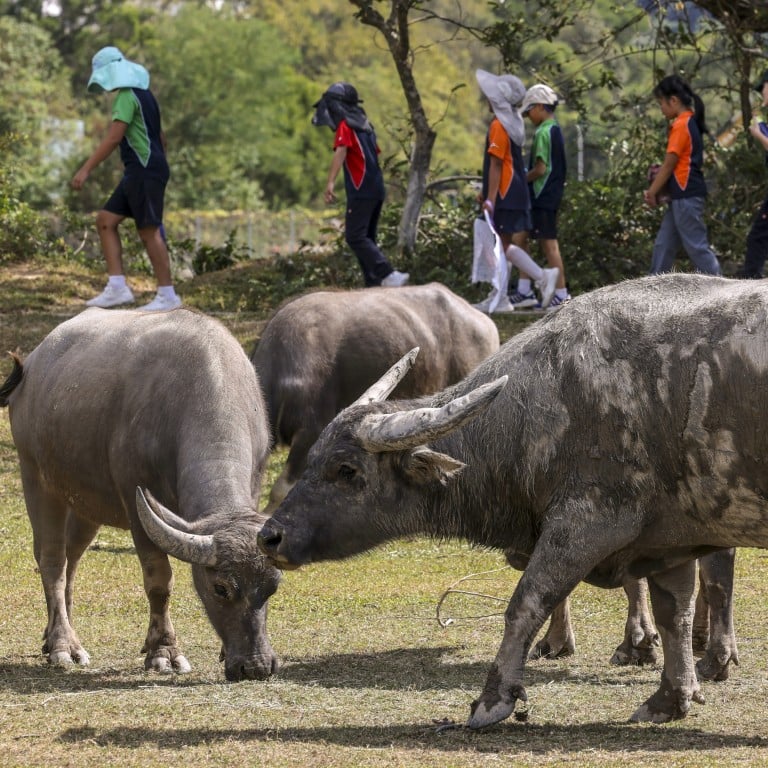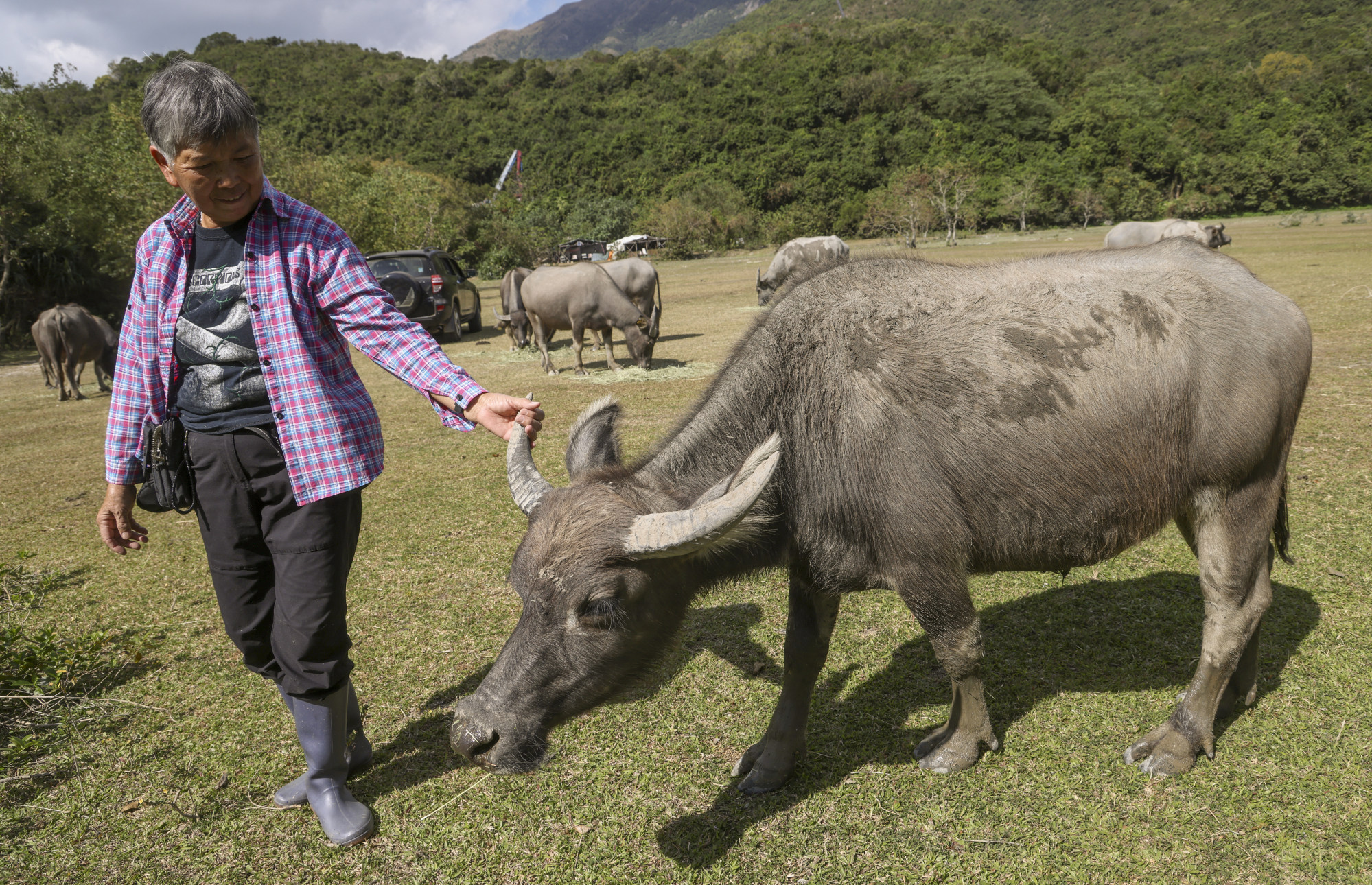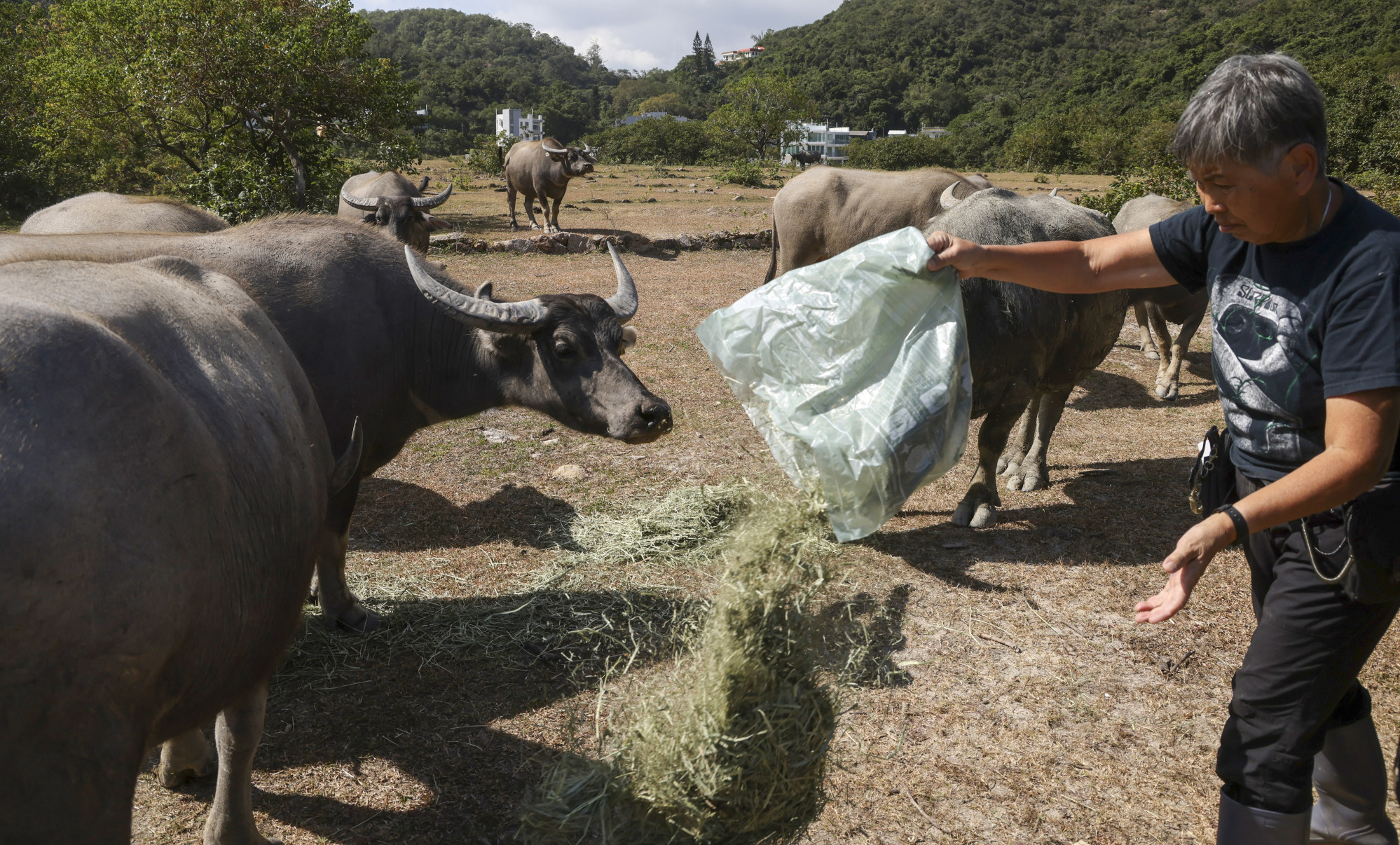
Population control or wipeout? Hong Kong ‘buffalo mama’ worries for Lantau Island cows, wants sterilisation stopped
- Lantau has most of Hong Kong’s 180 water buffaloes, which are not endangered but loved by residents
- Authorities have been sterilising buffaloes after cases of people being injured by animals
A buffalo lover on Hong Kong’s Lantau Island is rallying residents to push back against the government’s plan to sterilise two female buffaloes there.
Jean Leung Siu-wah, known as “buffalo mama” in the community for feeding and taking care of the animals around Pui O in southern Lantau, is worried that those are the last fertile cows left in the area.
She has been encouraging residents and animal-lovers to petition the Agriculture, Fisheries and Conservation Department (AFCD) to halt its buffalo sterilisation programme.

“This is not population control,” she said as the Post accompanied her to feed the buffaloes in Pui O. “It seems to me they want to wipe out the population completely.”
Leung, who has been voluntarily caring for the buffaloes for 15 years, said there were 29 in Lo Uk Tsuen and another 24 in Shap Long, and she had names for all of them.
She was worried about five-year-old “Che-nui” from the Lo Uk Tsuen herd and four-year-old “Bu-bu” from the group at Shap Long. Both gave birth to calves in the past year.
“In the past two years, six of my baby buffaloes have died,” she said. “It is not easy for them to reach adulthood.”
3 injured as buffaloes run into pupils on Hong Kong’s Lantau Island
But the department said there were concerns about recent incidents when people were injured by buffaloes on Lantau.
It said 11 males and two females had been sterilised there so far this year, and there were other unsterilised cows remaining on the island.
A survey last year found 180 water buffaloes in Hong Kong, it said. Most of them are on Lantau. The city is also home to 900 brown cattle, found in the northern New Territories, Sai Kung and Lantau.
The department said surgical sterilisation was a population control measure it used to reduce conflicts between people and cattle.

“In view of the increasing number of incidents where members of the public were severely injured by buffaloes on Lantau Island in recent years, the AFCD has adopted more stringent management measures, including relocating some aggressive buffaloes as well as performing sterilisation on more buffaloes, with a view to safeguarding public safety,” it said.
Randy Yu Hon-kwan, chairman of the Islands district council, said there were at least four serious cases of buffaloes injuring elderly people and children since 2020.
In 2021, two bulls fighting over territory in Pui O ran into a group of students, injuring three of them.
The younger bull, which was chasing away its father whom it had displaced at the top of the herd’s pecking order, was later captured and sterilised.
Hong Kong taxi driver arrested after online video shows fatal cow hit
“We don’t dislike them, but they weigh hundreds of kilograms and are unstoppable if aggressive,” said Yu, adding that the buffaloes were not endangered animals. “Between controlling their population or more residents getting hurt, sterilisation is the lesser of two evils.”
Water buffaloes were introduced on Lantau in the mid-1900s by farmers who used them to plough paddy fields. As farming declined from the 1970s, the animals were abandoned and left to fend for themselves.
Pui O residents told the Post that while the animals caused minor disturbance from time to time, they would be sad to see them gone.
Taxi driver Lo Chi-hung, 62, whose family has lived on the island for four generations, said the buffaloes would wander around Lo Uk Tsuen searching for food, munching on fruit left on altars outside residents’ homes.
“They are quite docile compared to wild boars,” he said. “There is no need to wipe them out completely. There needs to be a balance in population control. We have been coexisting for decades.”
A Pui O shop owner who only gave her name as Daday said a buffalo once ate her plants and left its droppings outside her store, but added the animals did not disturb residents most of the time.
Horns of a dilemma: what can be done about Hong Kong’s feral cows?
“It is okay if they fight in the fields, but if they bring the fight to the village, they might hurt people, especially visitors who approach them to take photos,” she said.
City University zoologist Alan McElligott, an associate professor in animal behaviour and welfare heading a government-funded project researching buffaloes on Lantau Island, said the animals were crucial to the biodiversity of their habitats.
“When they wallow in the wetlands, they create breeding grounds for frogs and insects, which in turn attract birds that feed on them,” he said.
McElligott added that buffaloes were not aggressive by nature and only fought over territory and females during the mating season.
In 2017 the government announced development plans for Lantau Island, including a South Lantau Eco-recreation Corridor and mountain bike trails.
The Development Bureau has marked part of the buffaloes’ habitat in Pui O, near the beach, for “low-impact leisure and recreational uses”.
“Buffalo mama” Leung said she would not give up trying to save the two cows from sterilisation, and she hoped to rally individuals to send emails to AFCD directors to persuade them.
“We hope to use ‘one letter per person’ to flood their in-boxes,” she said.

